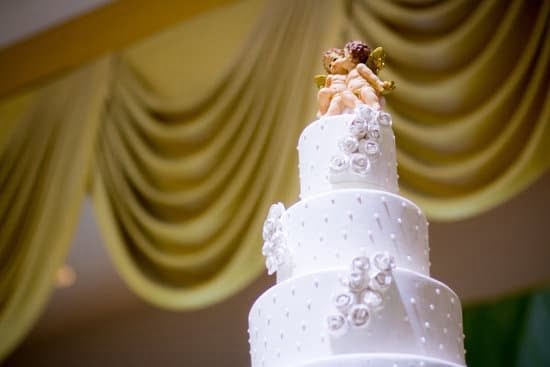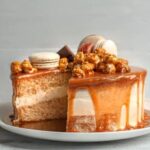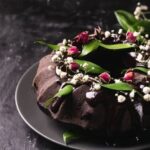Are you wondering how to decorate homemade cake to make it look as amazing as it tastes? Decorating your own homemade cakes can add a personal touch and creativity that store-bought cakes often lack. Whether it’s for a special occasion or just for fun, taking the time to decorate a cake can make any gathering more memorable.
The act of decorating a homemade cake allows you to tailor the design to the recipient, creating a truly unique and thoughtful gift. It also provides an opportunity to showcase your creative side and experiment with different techniques and flavors. From simple designs with elegant piping to intricate fondant creations, the possibilities are endless when it comes to decorating homemade cakes.
In this article, we will dive into the world of cake decorating, beginning with why it is important to take the time and effort to adorn your homemade creations. We will explore essential tools and ingredients needed for cake decorating, offer guidance on choosing the right type of cake for decoration, provide step-by-step instructions on basic and advanced decorating techniques, troubleshoot common issues encountered while decorating, and offer inspiration for unique designs and themes.
So let’s get started on adding that extra flair to your homemade cakes.
Essential Tools and Ingredients for Cake Decorating
Decorating a homemade cake allows for personal creativity and a special touch that store-bought cakes may not have. To achieve beautiful and professional-looking designs, there are essential tools and ingredients needed for cake decorating. Whether you’re a beginner or an experienced baker, having the right supplies is crucial for creating stunning decorations.
- Offset spatula: For smoothing frosting and applying fillings
- Piping bags and tips: Used for intricate designs with frosting
- Turntable: Makes it easier to evenly apply icing to the cake
- Bench scraper: Helps achieve smooth edges when frosting the cake
- Quality fondant: For sculpting and covering cakes
- Gel food coloring: Provides vibrant colors without thinning out the frosting
- Edible glitter or sprinkles: Adds a decorative touch to cakes
- Clear vanilla extract: Enhances the flavor of frostings without affecting the color
When purchasing cake decorating tools and ingredients, it’s important to invest in high-quality products. Popular brands such as Wilton, Ateco, and Americolor are known for their reliable and effective supplies. These can be found in specialty baking stores or online retailers.
To ensure a successful cake decorating experience, having these essential tools and ingredients on hand will set you up for creativity and success in making beautiful homemade cakes.
Choosing the Right Cake for Decorating
When it comes to decorating a homemade cake, choosing the right type of cake is crucial for the success of your decoration. Different cakes have different textures and flavors that can impact how well they hold up to certain decorating techniques. Here are some tips on the types of cakes that are suitable for decorating:
- Sponge Cake: This light and airy cake is perfect for decorating with fluffy frosting or whipped cream. Its soft texture allows for easy absorption of syrups or fillings, making it a great choice for layered cakes.
- Butter Cake: With its rich and dense texture, butter cake is ideal for intricate designs and sculpting. It can hold up well under fondant decorations and is perfect for themed cakes.
- Chocolate Cake: The deep flavor and sturdy crumb of chocolate cake make it a versatile option for various decorating styles. It pairs well with different fillings, frostings, and decorations.
When selecting a cake to decorate, consider not only the flavor but also the structure of the cake. A sturdy base will ensure that your decorations stay put and look impressive.
Whichever type of cake you choose, keep in mind that proper preparation is key. Leveling the cake layers, ensuring they are cooled properly, and using appropriate fillings are essential steps in preparing the cake for decorating. With the right choice of cake and careful preparation, you’ll be on your way to creating stunning homemade creations.
Preparing the Cake for Decorating
When it comes to decorating a homemade cake, proper preparation is key to achieving a professional and visually appealing result. Before you can start adding the fun and creative decorations, you’ll need to ensure that your cake is properly prepared and ready for decorating.
Leveling the Cake
One of the first steps in preparing a cake for decorating is to ensure that it is level. Uneven cakes can make it difficult to create smooth and even decorations. Use a long serrated knife or a cake leveler to carefully trim off any uneven domes or bumps from the top of the cake layers. Take your time with this step, as precision is important for achieving a well-balanced final result.
Frosting the Cake
Before you can start with any advanced decorating techniques, it’s essential to give your cake a crumb coat of frosting. This thin layer of frosting seals in any loose crumbs on the surface of the cake, creating a smooth base for additional decorations. Use an offset spatula to apply a thin layer of frosting over the entire cake before allowing it to set in the refrigerator for at least 30 minutes.
Ensuring Smooth Surface
After applying the crumb coat, it’s important to make sure that the surface of the cake is smooth and ready for decorating. Use a bench scraper or an icing smoother to gently go over the chilled crumb coat, smoothing out any imperfections in preparation for adding additional layers of frosting or decorations. Taking this extra step will ensure that your final decorated cake looks polished and professional.
By following these steps and taking care in preparing your homemade cake for decorating, you’ll be setting yourself up for success when it comes time to add those creative finishing touches. Remember that patience and attention to detail during this stage will greatly contribute to achieving a beautifully decorated homemade cake.
Basic Cake Decorating Techniques
Decorating a homemade cake can be a fun and satisfying way to add a personal touch to any special occasion. The key to successful cake decorating is mastering some basic techniques that will help bring your creative ideas to life. The most essential skill in cake decorating is frosting a cake smoothly, providing an even canvas for further decoration.
Another fundamental technique is piping, which allows for intricate designs and patterns on the cake’s surface. Additionally, learning how to work with fondant is crucial for creating visually stunning cakes.
When it comes to frosting, there are various types of frosting for different decorating needs. Buttercream frosting is versatile and easy to work with, making it an excellent choice for beginners. Fondant provides a smooth and clean finish and is ideal for sculpting decorations or covering the entire cake. Piping bags and tips are essential tools for creating decorative designs using frosting, adding texture, borders, flowers, or writing on the cake’s surface.
| Technique | Description |
|---|---|
| Frosting | The process of applying a layer of icing to the cake’s surface. |
| Piping | Using pastry bags and tips to create decorative designs with frosting. |
| Fondant application | The process of rolling out fondant to cover the entire cake or create decorative shapes. |
Advanced Cake Decorating Ideas
Advanced cake decorating opens up a world of creativity, allowing you to take your homemade cakes to the next level. From intricate layering and sculpting to creating edible decorations, there are numerous advanced techniques that can truly make your cake stand out.
One popular advanced cake decorating idea is layering, where you can create multiple layers with different flavors and fillings, adding depth and complexity to your cake. This technique requires precision and attention to detail but can result in a stunning and delicious cake.
Another advanced cake decorating idea is sculpting, which involves shaping the cake into unique designs or figures. This can be a challenging technique that requires practice and patience, but the results are incredibly impressive. Whether you want to create a sculpted animal or a three-dimensional object, sculpting adds an element of artistry to your homemade cakes.
For those looking to add an extra touch of elegance to their cakes, creating edible decorations is a fantastic advanced technique. From delicate sugar flowers to intricate lace patterns made from fondant, edible decorations can elevate the visual appeal of your homemade cakes. While this technique may require some specialized tools and skills, the end result is sure to impress anyone who sees or tastes your beautifully decorated creation.
As you explore advanced cake decorating ideas, don’t be afraid to experiment and push the boundaries of traditional cake decoration. Whether it’s trying out new techniques or mixing unexpected flavors and textures, embracing creativity is key in taking your homemade cakes to the next level. Remember that practice makes perfect, so keep honing your skills and challenging yourself with new ideas for truly exceptional cake decoration.
Troubleshooting Common Cake Decorating Issues
Frosting Mishaps
One common issue that cake decorators encounter is frosting mishaps. Whether the frosting is too runny, too thick, or just won’t stick to the cake properly, it can be frustrating. To troubleshoot this issue, make sure that your cake is completely cooled before applying the frosting.
If the frosting is too runny, try adding more powdered sugar gradually until it reaches the desired consistency. For overly thick frosting, a few drops of milk or water can help thin it out.
Uneven Layers
Another common problem when decorating homemade cakes is uneven layers. This can make the cake look lopsided and unprofessional. To ensure even layers, use a long serrated knife or a cake leveler to carefully slice off any uneven tops of the cake layers. Alternatively, you can use toothpicks inserted into the sides of the cake to guide your cutting and keep each layer as level as possible.
Decorating Challenges
When it comes to actually decorating the cake with piping techniques or fondant application, many beginners may struggle with achieving smooth finishes or intricate designs. One solution for this is to practice on a flat surface such as a cutting board before transferring your skills onto a cake. Additionally, investing in quality piping bags and tips can make a big difference in achieving professional-looking decorations on your homemade cakes.
By addressing these common issues and providing solutions, amateur bakers will be able to troubleshoot their own problems and feel more confident in their abilities to decorate homemade cakes for any occasion.
Inspiration and Tips for Creative Cake Designs
When it comes to decorating homemade cakes, the possibilities are endless. Whether you’re preparing a cake for a birthday, wedding, or any special occasion, getting creative with your designs can make the event even more memorable. One of the best parts of decorating your own cake is the opportunity to let your creativity shine and personalize the design to perfectly fit the recipient’s taste and personality.
To get started on your creative cake design journey, it’s important to gather inspiration from various sources. Look for ideas in magazines, online blogs and websites, or even by simply observing nature and everyday objects. By paying attention to colors, shapes, and textures around you, you can find inspiration that will translate into beautiful cake decorations.
Another tip for creating unique cake designs is to experiment with different techniques and materials. Try using unconventional tools such as stencils, edible glitter, or even fresh flowers to add a special touch to your cake. Don’t be afraid to think outside the box and explore new ways to decorate that truly reflect your individual style.
Lastly, don’t forget to consider the recipient’s preferences when brainstorming creative cake designs. If the person has a favorite color, hobby, or interest, incorporate those elements into the decoration. Personalizing the design shows thoughtfulness and consideration, making the cake even more meaningful when it’s presented at the celebration. Ultimately, embrace experimentation and have fun with your creations – after all, decorating homemade cakes is about expressing yourself through artistry and sharing joy with others through a delicious treat.
Conclusion
In conclusion, decorating homemade cakes is not just about creating a visually appealing dessert – it’s about the joy and satisfaction that comes with putting your creativity and personal touch into something special. Whether it’s for a birthday, anniversary, or just a regular day, decorating a homemade cake allows you to express yourself and make moments even more memorable.
The process of choosing the right cake, preparing it for decorating, learning basic and advanced techniques, troubleshooting common issues, and then finally seeing the finished product can be incredibly rewarding.
Furthermore, sharing your homemade cakes with friends and family adds another layer of joy to the experience. Seeing their faces light up as they admire your creation and then tasting the delicious results is priceless. It also creates a sense of connection and warmth as you share something made with love with those around you.
So, if you haven’t tried decorating a homemade cake before, I encourage you to give it a try. Let your creativity flow and don’t be afraid to experiment with different designs and themes. Whether you’re a beginner or have some experience in cake decorating, there’s always something new to learn and explore in this delightful world of homemade cakes. So go ahead, bake a cake, decorate it with love, and share the joy with others.
Frequently Asked Questions
How to Decorate a Simple Homemade Cake?
Decorating a simple homemade cake can be as easy as using a basic frosting and adding some fresh fruit or edible flowers on top. Start by spreading a layer of frosting over the cake evenly, then consider using a piping bag to create decorative patterns or writing.
You can also use sprinkles, chocolate shavings, or even powdered sugar to add visual appeal to the cake.
How to Decorate a Cake for Beginners?
For beginners, decorating a cake can be made easier by using pre-made decorations such as edible flowers, ready-to-use frosting in tubes for piping, or cake stencils for creating designs. Another option is to use fresh fruit like berries or citrus slices as decoration, which can add color and freshness to the cake without requiring advanced decorating skills.
What Is the Best Thing to Use to Decorate a Cake?
The best things to use to decorate a cake depend on personal preference and skill level. Some popular choices include frosting (buttercream, cream cheese, fondant), edible decorations (flowers, sprinkles, chocolate shavings), fresh fruit (berries, citrus slices), and piping tools for creating intricate designs.
Ultimately, the best thing to use is something that complements the flavor of the cake and adds visual appeal.

Welcome to my blog about home and family. This blog is a place where I will share my thoughts, ideas, and experiences related to these important topics. I am a stay-at-home mom with two young children. I hope you enjoy reading it! and may find some helpful tips and ideas that will make your home and family life even better!





